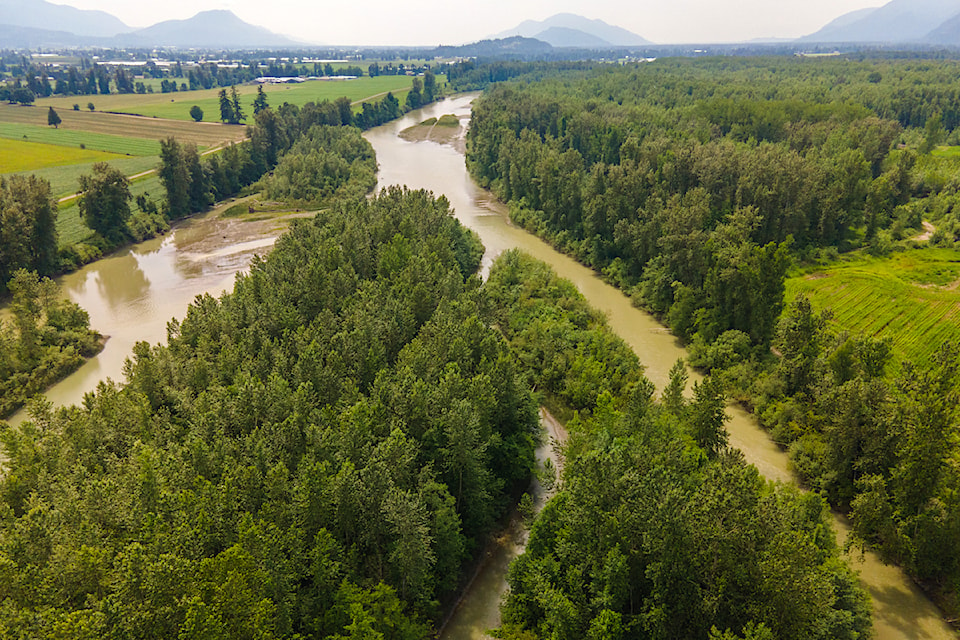Carey Island in the Fraser River near Chilliwack has been purchased by the Nature Conservancy of Canada to help protect its rare and priceless habitat.
In one of the last salmon strongholds, the island is located in the ecologically significant heart of the Fraser, between Chilliwack and Hope.
���߲��о����Carey Island is the Nature Conservancy of Canada���߲��о����s first project in the lower Fraser River, and it is an incredible opportunity to support salmon and other wildlife that rely on this ecosystem," said Steven Godfrey, West Coast program director for Nature Conservancy of Canada.
When it comes to the health of the Fraser, as a historic river that produces all five types of salmon and other species, everyone always talks about declining habitat. Here is a project focused specifically on addressing it. The privately held property is noted for its intact, undiked shorelines, and the conservancy's purchase of the 248-hectare island was undertaken to support the natural habitat for fish, birds and other species.
"The Fraser is such an iconic river in B.C., and we���߲��о����re really excited to be able to contribute to the ongoing work and vision to protect fish habitat in this important region," Godfrey added.
It may be "only one small piece of the Fraser," but individual projects add up to a "greater whole," he said.
Funding for the land purchase and project costs of almost $9 million, included contributions from Environment and Climate Change Canada through the Canada Nature Fund, the Fish and Wildlife Compensation Program, Sitka Foundation, Aqueduct Foundation, Collings Stevens Family Foundation, Rudy North as well as individual donors.
The project coincides with local First Nations stewardship projects getting underway near Gill Road bar. The Pelólxw Tribe, which includes the Cheam, Skwá and Kwaw-kwaw-a-pilt First Nations, is also working to restore the resilience of aquatic habitat within this stretch of the Lower Fraser.
���߲��о����We, the Pelólxw People, are moving forward to fulfill our stewardship duties and responsibilities to restore, conserve and preserve this area of our traditional territory, revitalize our Halq���߲��о����emeylem language and live our culture," said Eddie Gardner, T���߲��о����it���߲��о����elem Spath, a Pelólxw tribe representative for the Gill Bar project with the S���߲��о����ólh Téméxw Stewardship Alliance.
"In the spirit of reconciliation, we have a golden opportunity to collaborate with others to undertake this work for the benefit of current and future generations in honour of our ancestors.���߲��о����
The gravel-based channels for spawning and rearing are ideal for species at risk, like the White Sturgeon. But also Chinook, pink and sockeye salmon have all been documented in Carey Island channels.
"These investments through the Canada Nature Fund, working with the Nature Conservancy of Canada, are part of our national conservation campaign to protect 30 per cent of land and water in Canada by 2030," said Steven Guilbeault, Minister of Environment and Climate Change, in the release.
Godfrey elaborates on why this part of the gravel reach in the Fraser is unique.
"When you take a step back and look at how much of lower Fraser had been diked, or the land converted to agricultural use, or for housing use, there is not a lot of privately held land left with shorelines that haven't been modified," Godfrey said.
There are channels and back eddies on the land, that offer calm and crucial spawning and rearing habitat, with pockets that fill with water during the spring snowmelt.
How will they ultimately know if it's a success?
"As long as we continue to see rearing fish in the channels, along with different birds species and amphibians, and other species thriving, that's success in my book," Godfrey concluded.
They will be collecting baseline data to document their efforts and working with the local First Nations.
The fact is more than 90 per cent of the river shoreline has been altered. So Carey Island was one of the few remaining "fee simple" lands in the region that has not been diked, providing a conservation opportunity. The "fee simple" nature of the property is also described as free hold ownership, which is contrasted with lease-hold property.
There had been a recent history of small-scale farming on the island, and pockets of mature cedar and Douglas-fir remain.
But Chinook, pink and sockeye salmon have all been documented in the channels around and through Carey Island.
One of the huge supporters of the project has been Mark Angelo, founder of World Rivers Day, who called the acquisition "a major step forward" in efforts to protect the Heart of the Fraser.
"While the Fraser faces immense development pressures, the conservation of Carey Island is very good news indeed for the river and the many salmon and sturgeon it sustains," Angelo said. "Congratulations to the Conservancy and all the supporters who made the announcement possible."



